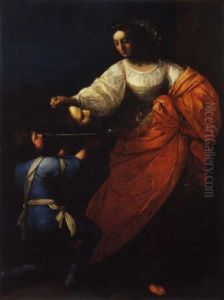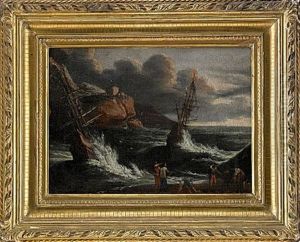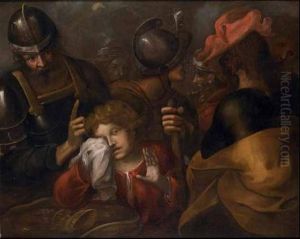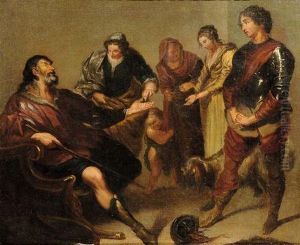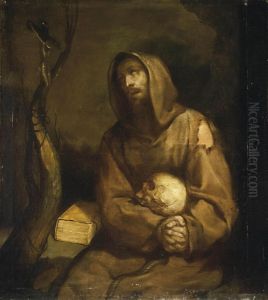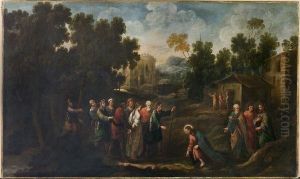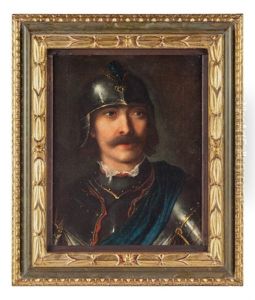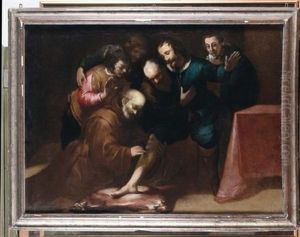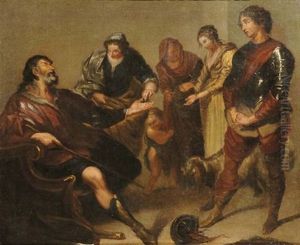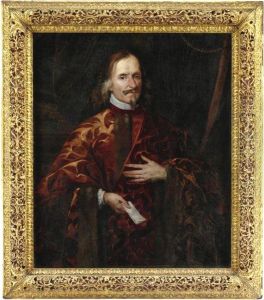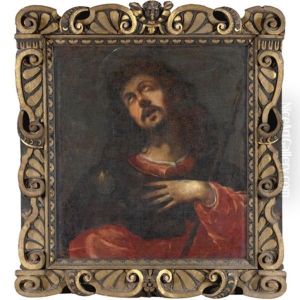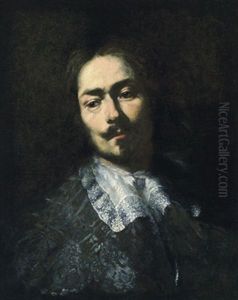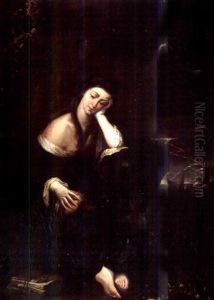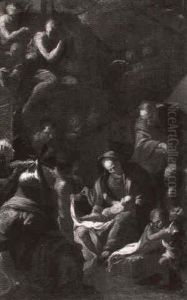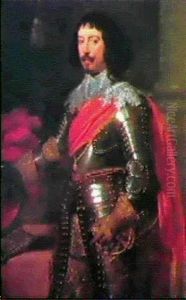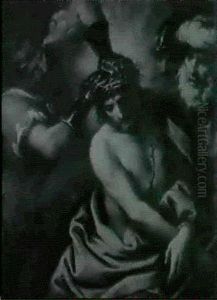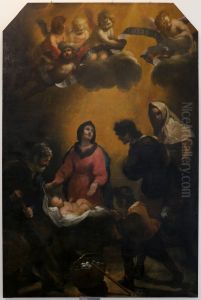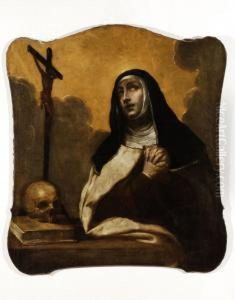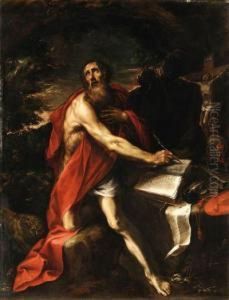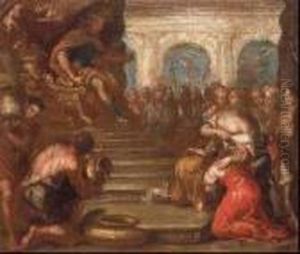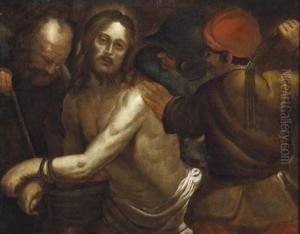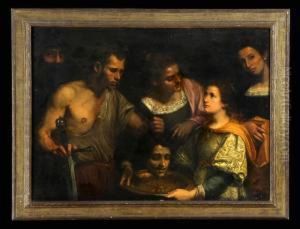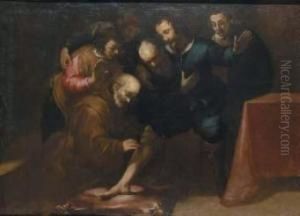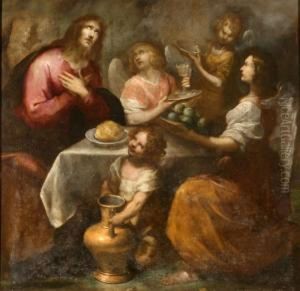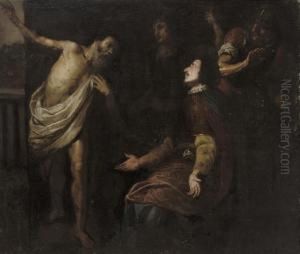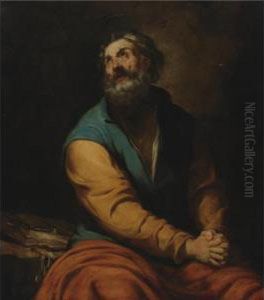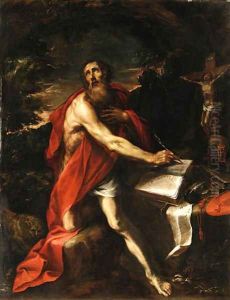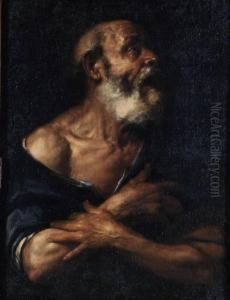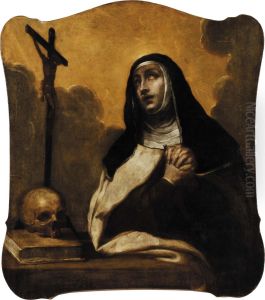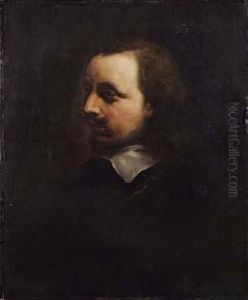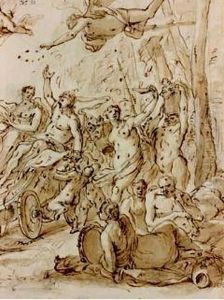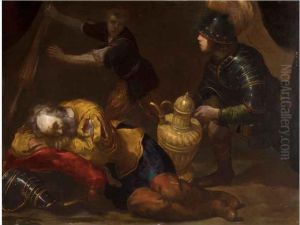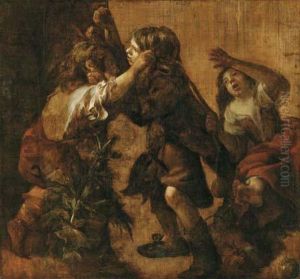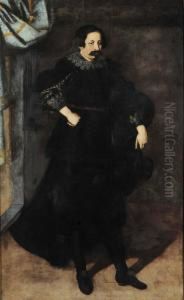Luciano Borzone Paintings
Luciano Borzone was an Italian painter of the late Mannerist and early Baroque periods, active mainly in his native city of Genoa. Born in 1590 into a family of artists, his father, Giovanni Battista Borzone, was also a painter, and his brothers Carlo and Francesco followed in the family tradition. Luciano received his initial training from his father and later continued to develop his skills under the tutelage of more established painters of the time.
Borzone’s work was influenced by the likes of Caravaggio and the Genoese school of painting, which included artists such as Bernardo Strozzi and Giovanni Benedetto Castiglione. His style is characterized by a naturalistic approach to subjects, an emphasis on dramatic lighting, and a clear attention to detail. Despite these influences, Borzone developed a distinctive style that set him apart from his contemporaries.
Throughout his career, Borzone received numerous commissions for religious works, including altarpieces and frescoes for churches and other sacred spaces. His paintings often depicted scenes from the life of Christ, the Virgin Mary, and various saints. In addition to religious works, he painted portraits and allegorical subjects.
One of Borzone’s most significant works is the fresco decoration of the chapel of the Holy Shroud (Cappella della Sacra Sindone) in the Genoa Cathedral. This work showcases his ability to handle large-scale compositions and his skill in creating a sense of spatial depth and volume.
Borzone’s influence extended to his sons, Gio. Agostino and Stefano, who also became painters. Unfortunately, the latter part of his life was marked by tragedy when the plague of 1657 took the lives of Luciano and several members of his family. He died in 1645, leaving a substantial body of work that contributed to the richness of the Genoese school and Italian Baroque painting.
